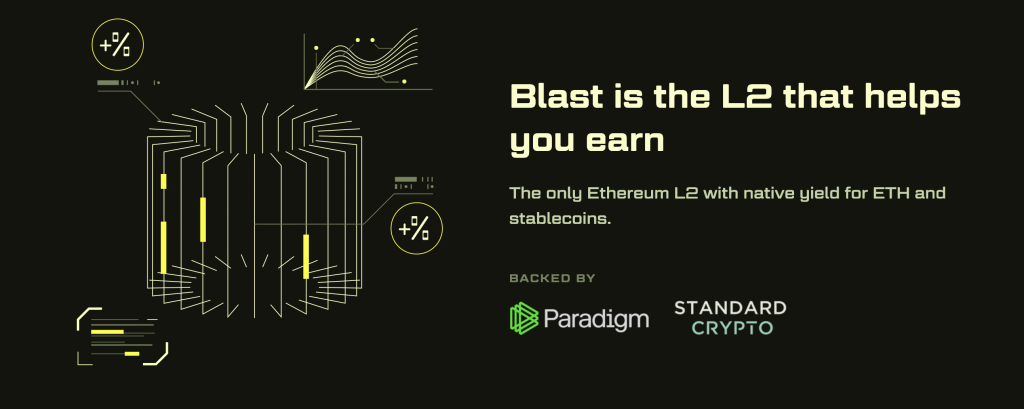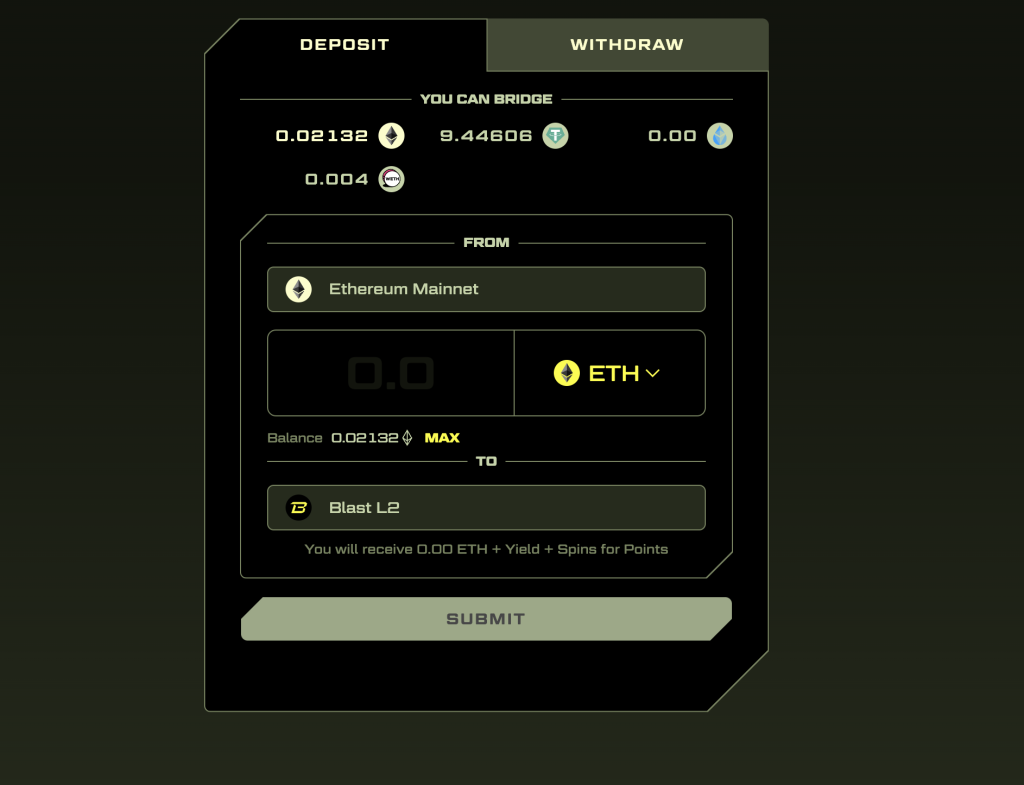Blast introduces a novel approach to Ethereum’s Layer 2 (L2) technology, emphasizing native yield generation for both ETH and stablecoins. This comprehensive guide will delve into the intricacies of Blast Chain, what sets it apart as an L2 solution, its benefits and drawbacks, and reasons for considering its use. The discussion will cover how Blast Chain operates, its unique features like auto-rebasing and yield generation from ETH staking and T-Bill protocols, and the strategic vision behind its creation. The guide will also include insights into the team behind Blast and their background, providing a holistic view of this innovative platform.
What is Blast Chain?
Blast Chain is an Ethereum Layer 2 solution that distinguishes itself by offering native yield for ETH and stablecoins. This capability is unique among L2s, as others do not typically include such yield, leading to potential asset depreciation over time. Blast’s model ensures that balances compound automatically, providing an inherent advantage in asset growth.
Community Engagement and Airdrops
Blast.io actively engages its community through airdrops, split between Early Access Members and Developers. This incentivizes participation and contribution to the platform’s growth and development.
What is an L2 Solution?
L2 solutions are secondary frameworks built on top of an existing blockchain (Layer 1), designed to enhance scalability and efficiency. They achieve this by handling transactions off the main chain, thus reducing congestion and speeding up processing times.
How Does Blast Chain Actually Work?
Blast Chain operates on several key principles:
- Auto Re-basing: ETH transactions and DApps on Blast Chain are designed around natively re-basing ETH on the L2, ensuring efficiency in transactions.
- L1 Staking and T-Bill Yield: Following Ethereum’s Shanghai upgrade, ETH yield from L1 staking and yield from MakerDAO’s on-chain T-Bill protocol are automatically transferred to Blast users. This approach provides a consistent yield for both ETH and the platform’s auto-rebasing stablecoin, USDB.
Why is a New L2 is Necessary?
Existing L2 solutions do not offer native yield, leading to a form of inflationary loss for users. Blast addresses this by incorporating ETH and stablecoin yield natively, providing a baseline yield that enhances the value proposition for both users and developers. This is achieved without altering the familiar experience of cryptocurrency users.
Pros and Cons of Blast L2
Pros:
- Native yield generation on ETH and stablecoins.
- Auto-compounding balances.
- Enhanced scalability and efficiency as an L2 solution.
- Innovative features like auto-rebasing and integration of L1 staking yields.
Cons:
- As a relatively new platform, there may be untested risks or unforeseen challenges.
- Dependence on external protocols (like Lido and MakerDAO) for yield generation, though there is potential for future independence.
The Team Behind Blast Chain
The Blast team consists of experienced professionals from diverse backgrounds, including FAANG, Yale, MIT, and other notable institutions. They have previously contributed to significant projects in DeFi and Web3, bringing a wealth of knowledge and expertise to the development of Blast.
Wrapping Up – What is Blast Chain?
Blast emerges as a pioneering force in Ethereum’s L2 landscape, offering unique features like native yield generation and auto-compounding balances. Its approach addresses some of the inherent limitations of existing L2 solutions, presenting a compelling option for users seeking to maximize their cryptocurrency holdings. The combination of innovative technology and a strong team background positions Blast as a noteworthy platform in the DeFi space.
If you want to participate in Blast chain to earn yield and be early to the project, you can click here to visit their website.
FAQs About Blast Chain L2
What makes Blast different from other Ethereum L2 solutions?
Blast is unique in offering native yield for ETH and stablecoins, a feature not present in other L2 solutions.
How does Blast Chain generate yield for its users?
Yield is generated through ETH staking and RWA protocols, with yields from these decentralized protocols passed back to Blast users automatically.
What are the risks associated with using Blast?
While offering innovative features, Blast, like any new platform, may present untested risks or challenges, and its yield generation is currently dependent on external protocols.
How can one participate in the Blast community and benefit from airdrops?
Community members can earn airdrop points by bridging to Blast and inviting friends, with these points redeemable at designated times.


